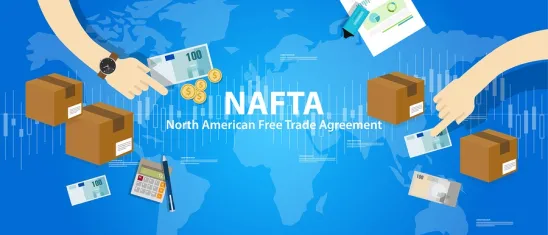If your company is a U.S. consumer of imported steel or aluminum, the new tariffs announced by President Trump on March 8, 2018 are bad news. The good news is that you can petition the government for exclusions of certain products. Formal procedures for such petitions won’t be published until March 19. But there are steps you can take now to prepare.
Background:
-
President Trump issued proclamations imposing new tariffs on imports of steel and aluminum March 8. These new import taxes are significant: 25% on steel products and 10% on aluminum products. This compares to the average import tariff rate for all goods entering the United States of about 2 percent. In imposing the new taxes, the President used his authority under a little-used provision of a 1962 trade law known as Section 232 of the Trade Expansion Act, allowing him to impose trade restrictions on any imports deemed to be a threat to U.S. national security. The taxes will become effective March 23, 2018.
-
The proclamations exempt Canada and Mexico, which are two of our largest sources of imported steel and aluminum. The President has stated with admirable optimism that giving away those exemptions will help encourage the parties to grant concessions in NAFTA negotiations. (“I have determined that the necessary and appropriate means to address the threat to the national security posed by imports of steel articles from Canada and Mexico is to continue ongoing discussions with these countries and to exempt steel articles imports from these countries from the tariff, at least at this time.”). Australia is also exempt, tweetedPresident Trump and Prime Minister Malcom Turnbull. The EU is also reportedly in negotiations for an exemption.
-
Economic consensus holds that the main culprit in the declining worldwide prices of steel and aluminum are runaway capacity, particularly in China. We note that the President’s new tariffs will have relatively small impact on China, which supplies only 5 percent of steel and 10 percent of aluminum imported into the United States according to an independent economicpolicy analysis. Those numbers are historical lows, due to already-strict U.S. antidumping and countervailing duties on many Chinese products. After the exemptions for Canada and Mexico, the largest affected exporters appear to be Brazil, South Korea, Russia, Turkey, and Japan for steel, and Russia, UAE, Bahrain, Germany, and Argentina for aluminum.
-
The March 8 proclamations provide for products to be excluded that the President determines either (1) are not produced in the United States in sufficient quantity or quality to meet demand; or (2) meet certain national security criteria not yet defined. Product exemptions will be granted only after a formal request has been made to the U.S. Secretary of Commerce, and only after the Commerce Department determines that an exclusion should be granted. Importantly, only a “directly affected party located in the United States” may make such a request. The Commerce Department is required to issue procedures for exclusion requests on or before March 19, 2018.
5 steps to exempt a product. The product exemptions provided for in the President’s March 8 proclamations may prove extremely valuable for U.S. manufacturers who depend on imported steel or aluminum. The new taxes would be expected to create a substantial price increase on those inputs. In order to request an exemption from the new tariffs for an imported steel or aluminum input, consider the following steps:
-
Determine if your inputs are in-scope. First, remember that imports from Canada and Mexico are already exempt. Second, if your imported steel or aluminum product is from a foreign country other than Canada or Mexico, refer to the definitions of the products covered in the President’s orders. The covered products are defined by reference to the Harmonized Tariff Schedule of the United States, as follows:
For steel, covered “steel articles” are defined at the Harmonized Tariff Schedule (HTS) 6‑digit level as: 7206.10 through 7216.50, 7216.99 through 7301.10, 7302.10, 7302.40 through 7302.90, and 7304.10 through 7306.90, including any subsequent revisions to these HTS classifications.
For aluminum, covered “aluminum articles” are defined as: (a) unwrought aluminum (HTS 7601); (b) aluminum bars, rods, and profiles (HTS 7604); (c) aluminum wire (HTS 7605); (d) aluminum plate, sheet, strip, and foil (flat rolled products) (HTS 7606 and 7607); (e) aluminum tubes and pipes and tube and pipe fitting (HTS 7608 and 7609); and (f) aluminum castings and forgings (HTS 7616.99.51.60 and 7616.99.51.70), including any subsequent revisions to these HTS classifications.
-
Analyze quality and quantity of U.S. supply. One of the two grounds for exclusion under the orders is tied to the quality and quantity of U.S. supply. This means you must identify U.S. suppliers of the product, and analyze quantity, and quality of U.S. supply. We strongly suspect that mere price differences will not qualify a product for exemption. Nor will broad statements about the failure of U.S. suppliers to meet your demand. The quantity and quality of supply arguments must be detailed, specific to the particular products for which you are requesting exclusion, and supported with evidence. We note that it will also be helpful, if possible, to address the lack of U.S. manufacturing capacity for the product, since the Department of Commerce’s recommendations on product exclusions (contained in DOC’s reports to the President on Steel and Aluminum) focused on products for which there is a “lack of sufficient U.S. production capacity of comparable products.”
-
Analyze the national security impact. The second of two grounds for exclusion is “relief based upon specific national security considerations.” The vagueness of that category as described in the March 8 proclamations should not deter you from analyzing the national security impact of the product. It is possible that procedures expected to be published on or before March 19 will include more detail on factors the Department will consider. We note also that DOC will consult with the Department of Defense (likely the Office of the Under Secretary of Defense for Acquisition, Technology, and Logistics, among others) in analyzing any national security exclusions.
-
Make a case. Whatever format the new procedures requires, the request for exclusion should be made using strong, straightforward, evidence-based arguments. It may be useful to address factors identified in the DOC’s Section 232 reports linked in Step 2 above, as your guide.
-
File a petition. Of these 5 steps, only this step 5 must wait until the Commerce Department issues formal procedures for product exclusion petitions, which we expect to be published on or before June 19. Once formal procedures are published, your request can be conformed to the required format and content and filed with Commerce.
These steps should help you create a strong request for an exemption from the new steel and aluminum tariffs. There may be a long queue of applicants, so there will be a strong benefit to getting started now. We recommend commencing steps 1-4 immediately.



 />i
/>i
